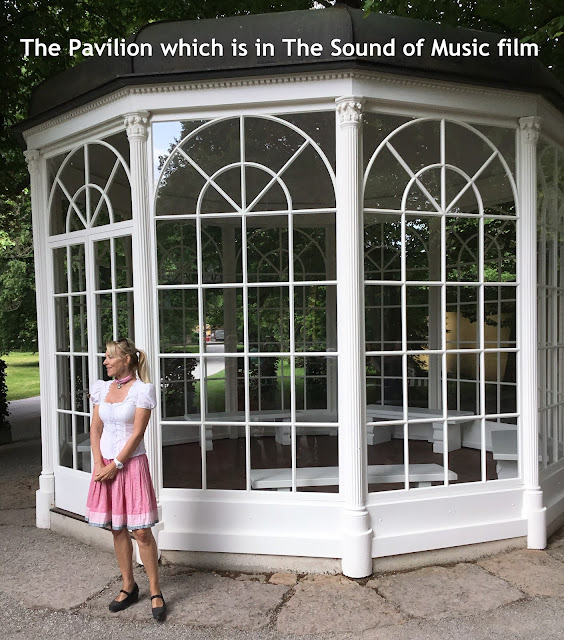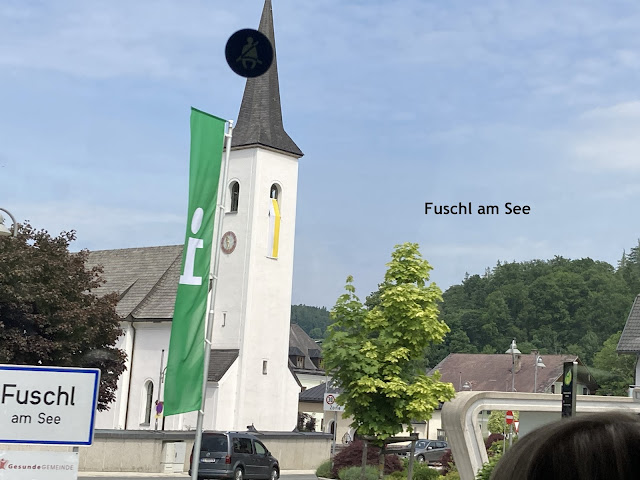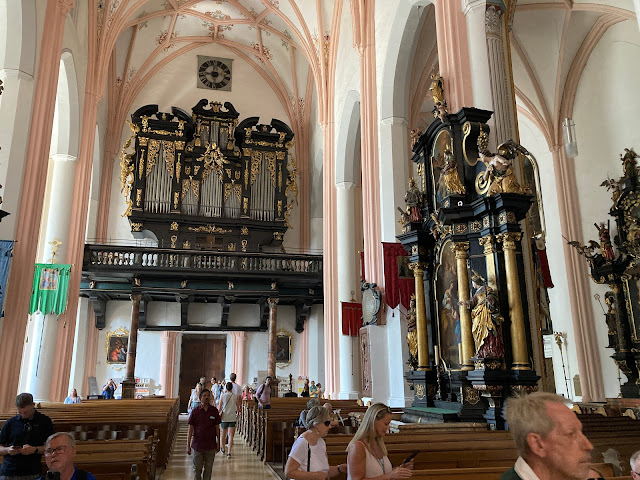One is
assaulted by certain aspects of Austrian history whilst you are in Austria. You
cant get away from the fact that Mozart was born there and there are any number
of concert halls, gardens and even chocolates celebrating his name ! Similarly,
one can never forget the famous movie Sound of Music, produced in
1965, featuring Julie Andrews and Christoppher Plummer. There are tours visiting
all the places where the film was shot…. even though the film did not stay true
to the real life story.
So, whilst in
Vienna, its obligatory to go on such a tour – more to see some beautiful
Austrian countryside as well as see the locations! We were very fortunate in
getting a guide who, dressed in her drindl, was charming, spoke excellent
English and lived the whole story. She had tapes and puppets and broke into
song each time we came to the particular relevant spot. What was also awesome
was that most of the full bus group joined in full heartedly in the singing. This is the itinerary given to us. 
Whilst the
itinerary states we begin with Mirabelle Gardens, we actually end the tour
there - as the coach starting / ending is at the Gardens. So, it made sense to
start off with the next stop first.
- ·
A summer palace for an autocratic prince-archbishop.
- ·
A failed shooting lodge and spa.
- ·
The centre of the creative arts and theatre scene of Europe.
- ·
A stage to represent a fascist regime.
- ·
A bombed-out dilapidated shadow of its former glory.
·
Now, its owned and operated by the international non-profit
organization, Salzburg Global Seminar. It is an award-winning hotel and social
enterprise. It is not a museum. It is a living, breathing, working space. It is
open to all who share in the Salzburg Global values.
In the 1830s it was acquired by a local gun range owner who plundered the art collection and squandered the majority of the remaining valuable artworks at an auction. In 1851, King Ludwig I of Bavaria acquired the Schloss and lived there on and off until 1869. Later owners included Austrian politician and poet Alexander Julius Schindler, a.k.a. alias Julius von der Traun, and local banker Carl Spängler.
The famous Max Reinhardt bought Schloss Leopoldskron in 1918 when it had fallen into a state of disrepair. The theatre impresario and founder of the Salzburg Festival reimagined the building’s interiors as a place to celebrate cultural innovation and a place of seamless connection between historic preservation and artistic creativity. He committed his considerable creative talents to the restoration of the Schloss, and with the assistance of Salzburg artisans, he renovated the staircase, the Great Hall, and the Marble Hall.
During the Reinhardt years, Schloss Leopoldskron was an important gathering place for theatrical producers, writers, composers, actors, and designers from both Europe and abroad. Together with Hugo von Hofmannsthal and Richard Strauss, Max Reinhardt founded the Salzburg Festival at Schloss Leopoldskron in 1920.
World War
II brought an end to the Reinhardt era: Schloss Leopoldskron was confiscated by
the Nazis as “Jewish property” following the Anschluss in 1938. Max Reinhardt
fled Austria for the US, where he died in 1943. The Nazis used the Schloss as a
guest house for leading artists and cultural figures in the Nazi party as well
as local party administrators. Plans were drawn up to transform the grounds in
the fascist style of Albert Speer.
Throughout
its history, Schloss Leopoldskron has been inextricably linked to cycles of
power, persecution, and renewal. Despite dark periods in the history of Schloss
Leopoldskron, the cycles of renewal – through vision, enterprise, and cultural
and social leadership, and the founding of Salzburg Global Seminar – have
ensured that Schloss Leopoldskron has remained a space of creativity,
inclusion, and inspiration for people from all over the world.
Next stop was Hellbrun Castle where the famous Sixteen going on Seventeen
was films. The castle entry is at some
distance from the gazebo – so for us, we went straight to the gazebo to see it.
Enroute,
we suddenly saw this amazing building with a sloping multi layer roof, in the
middle of a body of water, with nine bulls made from steel. Very strange.
Turned out to be the headquarters of Red Bull, the energy drink.
We zoom by Lake Fuschl and Lake
Wolfgang. The route is very pretty and we stop to see the lake and rooftops of Gilgen.
Because we covered such a long distance during the full day tour, we had to
pass by some interesting places, like Gilgen.

Nothing unique
about the church’s architecture except for its history. As we had an hour to
spend here, as the driver needed his rest break, we sat in a cafe and enjoyed a
hot chocolate drink.
This final
shot is of our excellent guide who must be credited for her enthusiasm. Imagine
doing this daily for a bunch of foreigners who may or may not tip her well. It’s
a labour of necessity and I wish her well for the future. 























No comments:
Post a Comment
Text and photographs are copyright of the author. No part of any article or photographs maybe transmitted or reproduced by any means, electronic, mechanical, photocopying or otherwise, without written permission. Do contact the author on email -- helpthesun@gmail.com